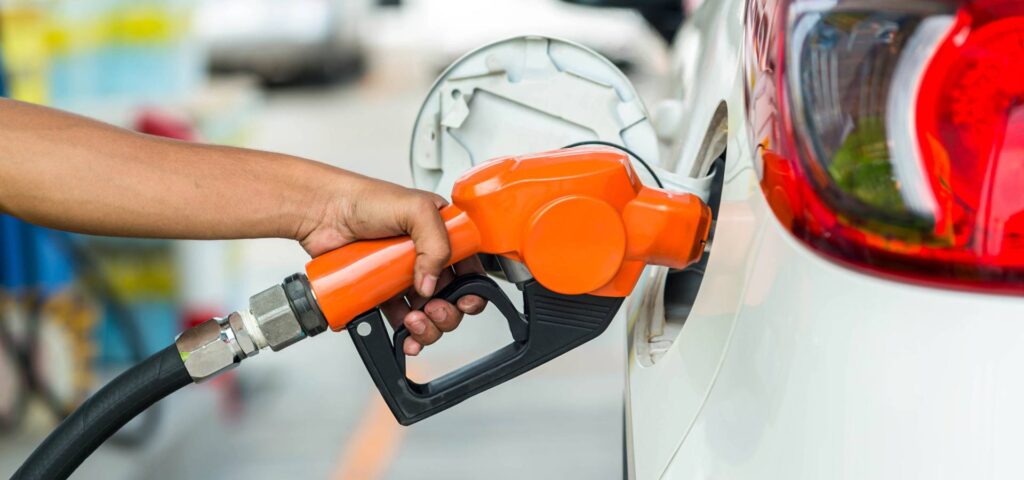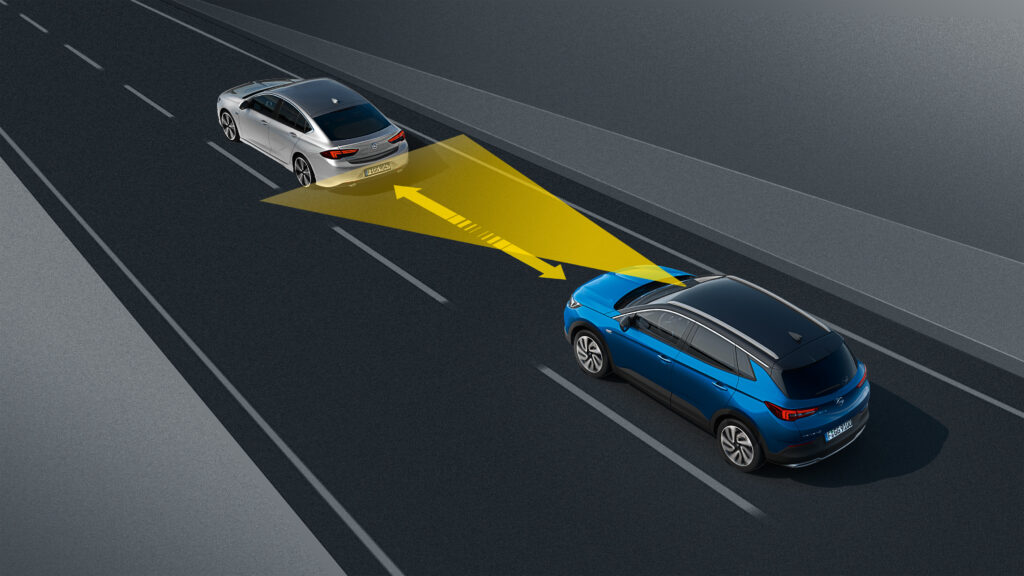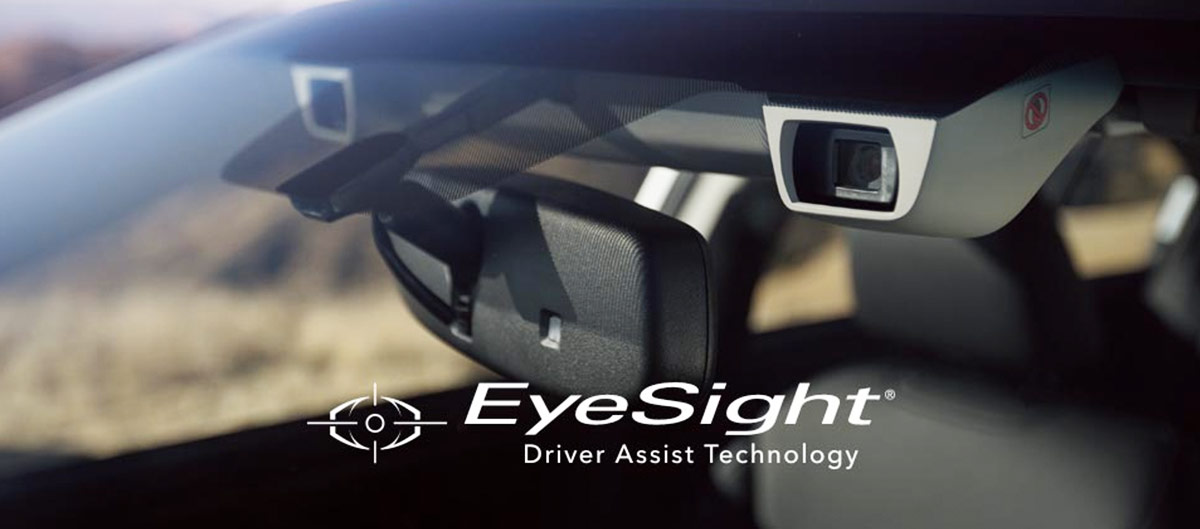The car business has undergone an innovation because of the development of eyesight driver assist technology, which has significantly enhanced roadway security. This cutting-edge invention gives motorists immediate support, lowering the danger of mishaps and improving the journey.
It integrates sophisticated imaging equipment, sensors, and computer programs. The following piece will examine the many facts of vision-automated driving and how it has significantly impacted the safety of drivers. We will emphasize some characteristics, advantages, and potential applications of this latest innovation with a thorough investigation. Let’s explore and see the hidden depth of eyesight driver assist technology.
Understanding The Detailed Concept Of Eyesight Driver Assist Technology
A group of cutting-edge precautions built into modern cars is eyesight driver assist technology. By enhancing motorists’ comprehension of the world around them, these characteristics reduce the risks involved in typical riding situations. Through the use of detectors, cameras, and neural networks, this equipment allows vehicles to recognize and react to potential dangers, assisting drivers in avoiding crashes and improving their automobile environment in terms of safety and comfort.
Enhancing visibility and comprehension is one of the main goals of visual eyesight driver assist technology. This system continually examines the area behind the car using several carefully chosen cameras, warning the motorist of potential risks, including lane leavings, people on foot, or objects in blind spots. The system can distinguish among multiple items and anticipate crashes using machine learning algorithms, delivering prompt notifications, or even executing autonomous braking to avoid catastrophes.

Advantages Of Roadside Assistance Equipment For Eyesight
Precautions From Accidents
The primary benefits of this technology are to prevent accidents by monitoring the surrounding of the road with an eyesight driver assist technology system. This monitoring provides a driver to be safe from an accident.
Higher Sensitivity
Eyesight driver assist technology motorists’ understanding of the road increases because of webcams & sensors. The all-encompassing perspective offered by the technology eliminates spots and enables users to make wise choices whilst transferring lanes, parking spaces, or negotiating slick roadways.
Higher sensitivity driver assist technology refers to advanced systems and sensors in vehicles that are designed to provide enhanced detection and response capabilities to assist drivers in various situations. These technologies aim to improve safety, increase situational awareness, and reduce the risk of accidents on the road.
Here are some examples of higher sensitivity driver assist technologies:
- Adaptive Cruise Control (ACC): ACC uses radar or laser sensors to maintain a set distance from the vehicle ahead, adjusting the vehicle’s speed accordingly. Higher sensitivity ACC systems can detect smaller objects and react more quickly to changes in traffic conditions.
- Collision Avoidance Systems: These systems use sensors such as radar, cameras, and lidar to detect potential collisions and provide warnings or intervene to prevent accidents. Higher sensitivity collision avoidance systems can detect and respond to smaller or faster-moving objects, such as pedestrians, cyclists, or motorcyclists.
- Blind Spot Detection: Blind spot detection systems use sensors to monitor the vehicle’s blind spots and alert the driver if there is a vehicle or object in the adjacent lane. Higher sensitivity systems can detect smaller or partially obstructed objects in the blind spots.
- Lane Departure Warning (LDW) and Lane Keeping Assist (LKA): LDW systems use cameras or sensors to monitor lane markings and warn the driver if the vehicle starts to drift out of its lane. LKA systems go a step further and can actively steer the vehicle back into the lane. Higher sensitivity LDW and LKA systems can better detect faint or partially obscured lane markings.
- Pedestrian Detection: Pedestrian detection systems use sensors and cameras to identify pedestrians and provide warnings or initiate automatic braking if a collision is imminent. Higher sensitivity pedestrian detection systems can detect pedestrians in low-light conditions, at greater distances, or with obstructed views.
- Emergency Brake Assist: This technology detects emergency situations where the driver might not apply sufficient braking force and automatically applies additional braking power to reduce the severity of a collision. Higher sensitivity emergency brake assist systems can detect and respond to potential collisions more rapidly.
- Rear Cross Traffic Alert: This system uses sensors to detect approaching vehicles or objects when backing up and alerts the driver to potential hazards. Higher sensitivity systems can detect smaller or faster-moving objects in a wider range of angles.
These are just a few examples of higher sensitivity driver assist technologies. The advancements in sensors, artificial intelligence, and computing power enable these systems to become more accurate, responsive, and capable of detecting smaller or more challenging objects or scenarios on the road.
Drivers’ Tiredness Is Lessened
Operator tiredness is a common side effect of long trips, increasing the danger. Drivers’ workloads are lightened by eyesight driver assist technology, which helps with activities like keeping an appropriate separation, remaining in your designated path, and spotting possible risks. Comprehensive safety is improved, and fatigue from driving is lessened.
Driver assist technology can indeed play a role in reducing drivers’ tiredness and fatigue by providing assistance and alerts to help them stay attentive and focused. While driver assist technologies cannot completely eliminate tiredness, they can help mitigate the risks associated with driver fatigue. Here are a few examples:
- Lane Departure Warning (LDW): LDW systems use cameras or sensors to monitor lane markings and alert the driver if the vehicle starts to drift out of its lane unintentionally. This can be particularly useful in preventing accidents caused by drowsy or inattentive driving.
- Driver Attention Monitoring: Some vehicles are equipped with systems that monitor the driver’s behavior and alertness. They use various sensors, such as cameras, to track the driver’s eye movements, head position, and other signs of drowsiness or distraction. If signs of fatigue are detected, the system can issue alerts, such as visual or auditory warnings, to prompt the driver to stay alert.
- Adaptive Cruise Control (ACC): ACC systems, in addition to maintaining a set distance from the vehicle ahead, can also help reduce driver fatigue. By automatically adjusting the vehicle’s speed to match the traffic flow, ACC can alleviate the need for constant speed adjustments, allowing the driver to relax their feet and reduce fatigue on long journeys.
- Fatigue Detection Systems: Some vehicles employ advanced algorithms that analyze the driver’s behavior, such as steering patterns, braking frequency, and other inputs, to detect signs of fatigue or drowsiness. When fatigue is detected, the system can provide warnings, such as vibrating the steering wheel or sounding an alarm, reminding the driver to take a break.
- Intelligent Speed Adaptation (ISA): ISA systems use GPS data and mapping information to monitor speed limits and provide feedback to the driver if they exceed the posted limit. By promoting compliance with speed limits, ISA can help reduce the risk of accidents caused by excessive speed, which can be more prevalent in fatigued driving.
It’s important to note that while these technologies can assist in reducing tiredness and fatigue, they are not substitutes for responsible driving habits and the need for drivers to take regular breaks, get enough sleep, and maintain a healthy lifestyle. Driver assist technologies should be seen as supportive tools that can enhance safety and help mitigate risks on the road.
Enhancing Fuel Efficiency
In addition to improving safety, eyesight driver assist technology helps vehicles use fuel more efficiently. These devices can assist drivers in achieving a smoother journey and lower fuel usage by improving shifting speed patterns. Furthermore, tools like adaptive cruise control guarantee that cars keep a constant pace, preventing needless acceleration and decelerations that might waste gasoline.
Driver assist technology can contribute to enhancing fuel efficiency in vehicles by optimizing driving behavior, reducing unnecessary energy consumption, and providing real-time feedback to drivers. Here are some examples of how driver assist technology can improve fuel efficiency:
- Eco-Driving Assistance: Many vehicles offer eco-driving assistance systems that provide feedback and guidance to drivers on how to drive more efficiently. These systems can display real-time fuel consumption information, suggest optimal acceleration and deceleration patterns, and provide tips on eco-friendly driving techniques. By following these recommendations, drivers can reduce fuel consumption and improve efficiency.
- Adaptive Cruise Control (ACC): ACC systems not only maintain a set distance from the vehicle ahead but also adjust the vehicle’s speed according to traffic conditions. By optimizing acceleration and deceleration, ACC can help avoid unnecessary fuel consumption caused by sudden speed changes, resulting in smoother driving and improved fuel efficiency.
- Route Optimization: Some navigation systems incorporate fuel-efficient route planning. By considering factors such as traffic conditions, road elevation, and speed limits, these systems can suggest routes that minimize fuel consumption. This technology can help drivers make more informed decisions when selecting the most efficient route, especially for long-distance journeys.
- Predictive Gear Shifting: Advanced driver assist systems can analyze road conditions, traffic patterns, and driver behavior to optimize gear shifting in vehicles equipped with automatic transmissions. By predicting the optimal time to shift gears, the system can reduce fuel consumption by ensuring the engine operates at its most efficient RPM range.
- Start-Stop Systems: Start-stop technology automatically shuts off the engine when the vehicle is stationary, such as at traffic lights or in heavy traffic, and restarts it when the driver releases the brake pedal. This feature helps reduce idling time and fuel consumption, especially in urban driving conditions with frequent stops and starts.
- Aerodynamic Design: While not a direct driver assist technology, vehicle manufacturers increasingly utilize advanced aerodynamic design principles in their vehicles. Streamlined body shapes, improved underbody airflow, and aerodynamic add-ons, such as active grille shutters or air curtains, help reduce air resistance and improve fuel efficiency at higher speeds.
It’s worth noting that driver assist technology is most effective when combined with responsible driving practices, such as maintaining appropriate tire pressure, reducing unnecessary weight in the vehicle, and avoiding aggressive acceleration or braking. By integrating these technologies with good driving habits, drivers can achieve significant fuel savings and reduce their environmental impact.

Healthcare Advantages
Adoption of eyesight driver assist technology may also result in favourable insurance outcomes. Insurance companies are aware of these systems’ benefits for safety and frequently offer cheaper premiums or discounts for cars with eyesight driver assist technology. This encourages drivers’ use of the device, enhancing traffic safety.
Inclusiveness And Accessible
To enable people with specific limitations or impairments to drive, eyesight driver assist technology is essential. This technology allows a broader spectrum of people to operate automobiles safely, encouraging inclusion on the roads. It assists in crucial driving duties like lane maintenance and accident avoidance.
Critical Elements Of Eyesight Driver Assist Technology
Warning For Lane Departure
Eyesight driver assist technology in the LDW mechanism employs visual and audible alerts to warn motorists if they accidentally wander out of their lane by evaluating the car’s positioning on the highway. It also lessens the likelihood of mishaps brought on by inattentive or sleepy driving.
Autonomous Cruise Control
Eyesight driver assist technology helps to stay at an appropriate distance behind the car in front; ACC blends conventional cruise control with cutting-edge sensors and cameras. ACC lessens the possibility of rear-end crashes by automatically altering the car’s speed and following geographical separation, particularly in congested areas.
Autonomous Cruise Control (ACC), also known as Traffic-aware Cruise Control or Adaptive Cruise Control (ACC) with Autonomous Function, is an advanced driver assist technology that enhances traditional cruise control systems. ACC combines the functionality of regular cruise control with sensors, radar, lidar, and cameras to maintain a safe and consistent distance from the vehicle ahead, even in stop-and-go traffic. It is a key feature in the progression towards autonomous driving.
Here’s how Autonomous Cruise Control typically works:
- Speed Control: Like conventional cruise control, ACC allows the driver to set a desired speed for the vehicle. The system uses sensors to monitor the speed of the vehicle and surrounding traffic.
- Distance Monitoring: ACC uses sensors, such as radar or lidar, to measure the distance between the vehicle and the one in front. It continuously adjusts the vehicle’s speed to maintain a preset distance, usually set by the driver. This distance is often adjustable, providing options for closer or larger gaps between vehicles.
- Adaptive Function: In addition to speed and distance control, ACC adapts to the flow of traffic. If the vehicle ahead slows down or comes to a stop, the ACC system will automatically reduce the speed or bring the vehicle to a complete stop, depending on the specific system and traffic conditions. Once the traffic starts moving again, ACC will resume the desired speed and maintain the preset distance.
- Safety Features: ACC systems often incorporate safety features, such as forward collision warning and automatic emergency braking. These features help prevent or mitigate collisions by detecting potential hazards and providing alerts or initiating braking if necessary.
- Manual Override: While ACC can control the acceleration and braking, the driver remains responsible for overall vehicle control. Drivers can usually override the system by applying the brakes or accelerator themselves.
Autonomous Cruise Control improves convenience and safety by reducing driver fatigue and enhancing traffic flow. It can help maintain a safe distance from the vehicle ahead, avoid unnecessary braking or acceleration, and provide a smoother driving experience in congested traffic conditions.
It’s important to note that while ACC can provide a significant level of automation, it is considered a Level 2 automation feature on the Society of Automotive Engineers (SAE) automation scale. Level 2 automation still requires the driver to remain attentive, keep their hands on the steering wheel, and be prepared to take control of the vehicle when necessary.

Blind Sight Monitoring
Eyesight driver assist technology uses cameras and sensors to find things in the car’s blind areas, such as other cars or pedestrians. BSD aids the driver in making safer lane changes, lowering the chance of side crashes through visual and audio alerts.
Caution Regarding Imminent Crash
Eyesight driver assist technology is also vital to keep track of the distance between the car and the objects up ahead. FCW uses detectors and webcams. The technology informs the driver visually and audibly if a potential collision is detected, allowing the operator to take defensive measures and prevent a crash.
When it comes to cautioning drivers about an imminent crash, several driver assist technologies and safety systems are designed to provide alerts and assist in collision avoidance.
It’s important to note that while these driver assist technologies can provide valuable alerts and assistance, they do not replace the driver’s responsibility to remain attentive and in control of the vehicle at all times. Drivers should always prioritize safe driving practices, such as maintaining a safe following distance, checking blind spots manually, and staying aware of their surroundings to avoid crashes.

Future Opportunities And Developments
The object identification abilities of eyesight driver assist technology will increase. To give drivers even more timely and accurate cautions, this includes recognizing and distinguishing between bicyclists, pedestrians, and other types of road users who are at risk.
Eyesight driver assist technology systems will be able to learn and adjust to different driving styles thanks to the incorporation of artificial intelligence (AI) technologies. This customized approach will optimize security precautions depending on the driver’s preferences and behaviour, resulting in a more specialized and straightforward driving experience.
Eyesight driver assist technology systems are a necessary first step toward completely driverless vehicles. Thanks to developments in sensors, cameras, and AI algorithms, cars can ultimately drive and function independently without human involvement. This will completely alter how we think about transportation, resulting in safer and more effective road systems.
Conclusion
With the introduction of eyesight driver assist technology, which has redefined traffic safety regulations, the automotive industry has undergone a revolution. Through the use of advanced sensors, cameras, and innovative algorithms, this kind of technology provides drivers with real-time help, enhancing their comprehension and lowering potential hazards.
The primary traits and abilities of vision-based driver assistance systems contribute to a drop in accidents, an improvement in vigilance, a reduction in driver fatigue, a boost in availability, and an increase in fuel efficiency. As these technologies advance, we may anticipate safer roads and a better driving experience for everyone. Adopting vision driver aid technology paves the way for the future growth of intelligent, networked transportation systems. Thus, eyesight Driver Assist Technology offers exceptional benefits that anyone cannot deny.




















